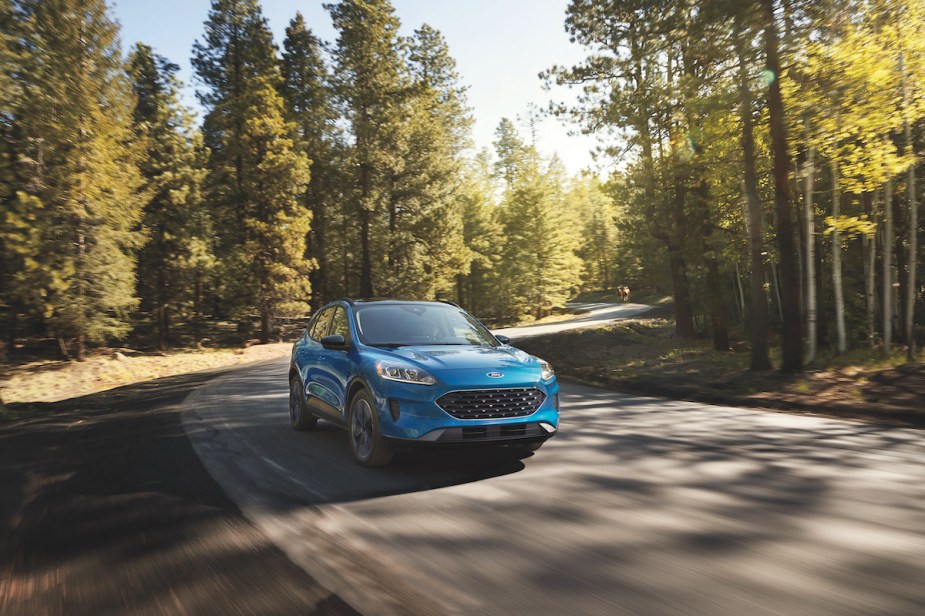
Plug-in Hybrid Comparison: 3 Advantages the Ford Escape PHEV Has Over Kia Niro PHEV
The 2022 Ford Escape PHEV, or plug-in hybrid, is one of the best PHEV options on the market right now, but other automakers have something similar in their lineup. For example, the 2022 Kia Niro PHEV is also a solid option car shoppers may want to consider. That said, the 2022 Ford Escape PHEV may be the better option, and here’s a look at three advantages it has over the Kia Niro PHEV.
The two PHEV SUVs have a few things in common
As Kelley Blue Book wrote, the two PHEV SUVs are relatively similar in some ways. For example, while horsepower and torque outputs differ, the two SUVs have roughly the same fuel economy. It’s also worth noting that the Escape PHEV is longer, wider, and taller than the Niro PHEV. Despite the size difference, both plug-in hybrids get 105 MPGe.
That great fuel economy comes at a cost, though. The regular Escape can be equipped with all-wheel drive, but the PHEV version can’t. Similarly, the Niro PHEV doesn’t have all-wheel drive, so both vehicles only get front-wheel drive. Both cars have similar standard features, including Apple CarPlay and Android Auto compatibility. The Escape PHEV is better in three ways, however.
Ford gave the Escape PHEV a more powerful powertrain

One of the main advantages of the Ford over the Kia is its performance. The Escape PHEV has a 2.5-liter four-cylinder that works with an electric motor to get 221 hp combined. The Niro PHEV, meanwhile, has a 1.6-liter four-cylinder that works with an electric motor to get 139 hp combined. That’s a difference of 82 hp, and drivers will be able to feel that difference at highway speeds.
Drivers will be able to get more electric driving range with the Ford Escape PHEV
In addition to the more powerful powertrain, Ford also gave the Escape PHEV more electric driving range. This is primarily thanks to the fact that the Ford has a bigger battery pack than the Kia does. Ford gave the Escape PHEV a 14.4-kWh battery pack, while Kia gave the Niro PHEV an 11.1-kWh battery pack.
As a result of that difference, the Escape PHEV can travel 38 miles in battery-only mode, while the Niro PHEV can only go 26 miles. That’s a difference of 12 miles, which can be a big difference. This is because battery-only mode is often used for daily driving and commutes, and by having a longer range, the Ford will be able to handle longer commutes than the Kia will be able to.
The Ford Escape PHEV has more cargo capacity than the Kia Niro PHEV does
Thanks to the fact that the Escape PHEV is a longer, wider, and taller vehicle than the Niro PHEV, the Ford will also be more spacious on the inside. This is true both for passengers and for cargo. The Ford SUV beats the Kia in almost every category regarding headroom, legroom, and shoulder room. For example, the Escape PHEV has 42.4 inches of front legroom, while the Niro PHEV has 41.7 inches of front legroom.
There’s a bigger difference between the two plug-in hybrids in terms of cargo capacity. Without folding any seats down, the Ford has 34.4 cu-ft of cargo capacity, while the Kia has 19.4 cu-ft. That’s a difference of 15 cu-ft. It’s a closer race when the rear seats are folded down, though. The Escape PHEV tops at 60.8 cu-ft, while the Niro PHEV tops at 54.5 cu-ft.


